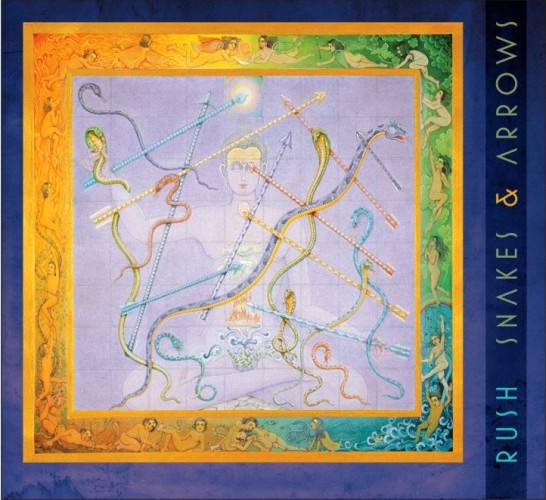
Snakes and Arrows (2007)

1.Far Cry
2.Armor and Sword
3.Workin' Them Angels
4.The Larger Bowl
5.Spindrift
6.The Main Monkey Business
7.The Way The Wind Blows
8.Hope
9.Faithless
10.Bravest Face
11.Good News First
12.Malignant Narcissism
13.We Hold On
After the long-awaited return album Vapor Trails arrived in 2002, Rush suddenly found themselves in something of a conundrum. The critics, for the most part, responded enthusiastically. But among the faithful, the reception was far more mixed. Many listeners found the sound overly abrasive—cacophonous, loud, distorted. The lack of any polish or finesse made the album difficult to digest in one sitting. Simply put, it gave more than a few fans a pounding headache after twenty minutes.
It’s to the band’s credit, then, that their follow-up saw a deliberate course correction. The next album was a distinct return to clarity, balance, and precision. And while still a modern-sounding release, it was clearly crafted with the sonic sensibilities of earlier works in mind. This was the sound long-time devotees had been clamoring for. The production, in particular, is exceptional—sharp without being shrill, dynamic without being overbearing.
Though slightly front-loaded (with the strongest material appearing early on), the opening handful of tracks are so compelling that any later drop in momentum is easily forgiven. Within seconds, the identity of the band is unmistakable: the tight interplay between guitar, bass, and drums; the soaring vocal; the rhythmic complexity. It only takes ten seconds into most tracks to know exactly who you're listening to.
One particular highlight is the inclusion of three instrumentals—one of which is a brief acoustic piece. These tracks are consistently among the most celebrated by fans, and their presence here is a welcome addition. Lyrically, however, the tone is considerably darker than usual. Neil Peart, never shy about expressing philosophical discontent, sharpens his pen to take aim at religion and politics in equal measure. Faithless lays it out directly and comes across as too malodorous. It’s not subtle. Nor is Armor and Sword, although that piece at least manages a degree of perspective. But with The Way the Wind Blows, the commentary leans dangerously close to outright condescension.
Elsewhere, The Larger Bowl laments life’s inequalities in a manner that may strike some as overly simplistic. When millionaire musicians start lamenting how unfair the world is, one can’t help but raise an eyebrow. Still, one gets the sense that these grievances are sincerely felt. And, regardless of where one lands ideologically, the melodies remain engaging enough to carry the weight of the words.
During the tour that followed (a massive undertaking, as usual), the band played no fewer than nine songs from this album—an unusually high number considering their back catalogue. By that point, most new albums had been represented by just a small handful of tracks on stage. The confidence here was telling: they believed in the material.
And yet, as always, the fanbase remained divided. For every disciple who welcomed the return to form, there were others who found fault with the lyrics, the tone, or simply the direction of the music itself. For what it’s worth, this may very well have been their best album in two decades. It rocks. Even if you don’t agree with everything it has to say.
Go back to the main page
Go To Next Review